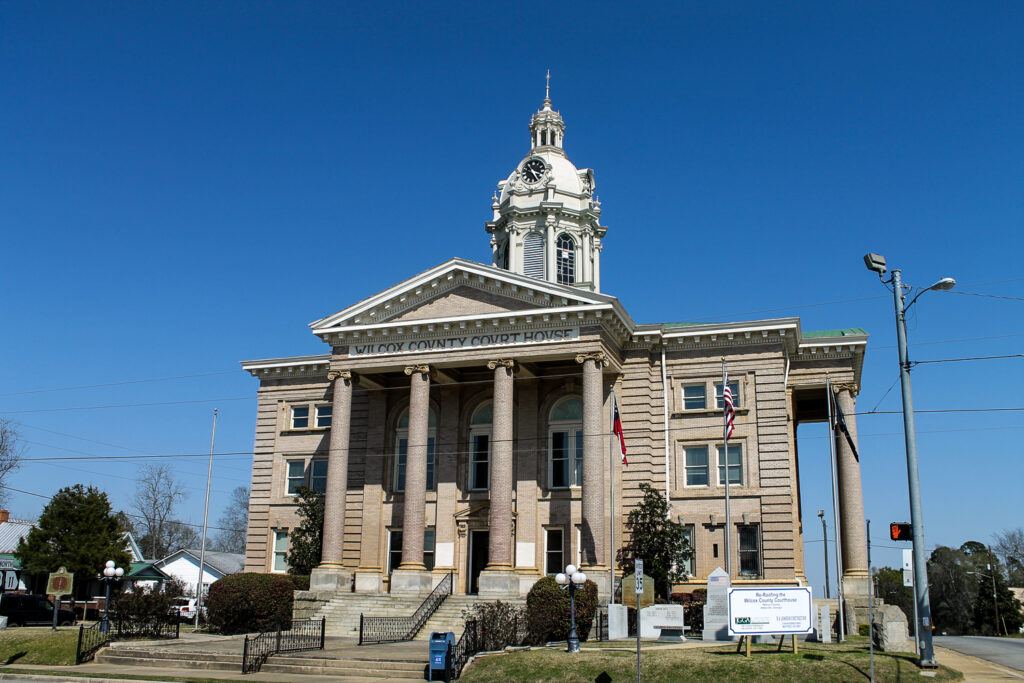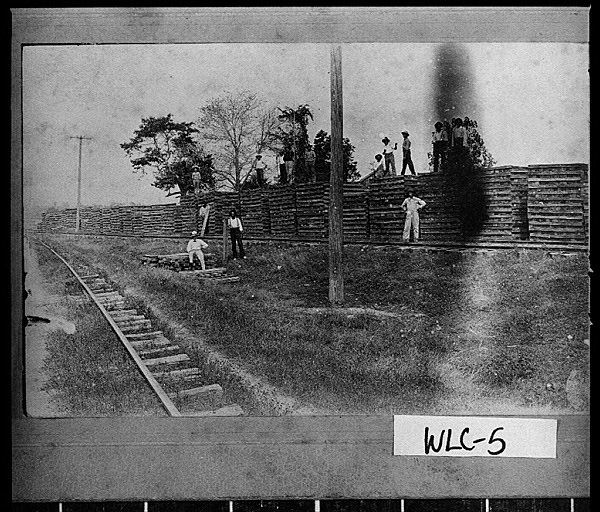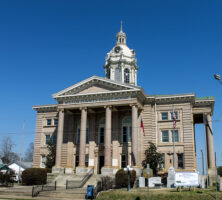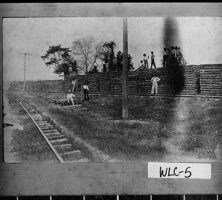Georgia’s 126th county, Wilcox County comprises 380 square miles and was created in 1857 in the central part of the state from Dooly, Irwin, and Pulaski counties. Later, parts of Wilcox County were used to create Turner (1905) and Ben Hill (1906) counties. Historians disagree about the origin of Wilcox County’s name, some claiming that it is named after General Mark Wilcox, a soldier in the Indian Wars who later served in the Georgia General Assembly, and others believing that it is named for his father, Captain John Wilcox.
Hernando de Soto is believed to have discovered the Ocmulgee River, in the area that became Wilcox County, in 1540. The area’s first inhabitants were Creek Indians who signed treaties in the first two decades of the nineteenth century, forfeiting their land. The first white settlers came from neighboring counties and states during the late eighteenth and early nineteenth centuries. Much of the land was virgin pine forest. Many settlers lived first by subsistence farming and hunting and moved later into cattle ranching after establishing their homesteads. Eventually, settlers produced cotton and fruit, as well as cattle, for the market.

The county seat is Abbeville, established in 1858 but not incorporated until 1883. Its location, near the eastern boundary of Wilcox County, was reportedly chosen because David Fitzgerald donated sixty acres there for use as a county seat. A courthouse was built in 1858, and the town subsequently developed around it. In response to complaints that the seat of government was not centrally located, county taxpayers were invited by the state assembly to challenge the eastern location, but no one came forth. The old courthouse remained in use until 1903, when the brick structure that still serves today was completed. A large wild hog population in Abbeville led to its nickname, the “Wild Hog Capital of Georgia,” and the town hosts an annual Ocmulgee Wild Hog Festival.
Wilcox County was relatively young when the Civil War (1861-65) began, but its citizens supported the war effort by sending their sons and husbands to fight. Confederate president Jefferson Davis camped on May 8, 1865, at Abbeville during his flight through Wilcox County at the end of the war, two nights before his capture by Union forces in Irwinville.
In 1887 a new town in the center of the county was created, partly as a result of the completion of the Savannah, Americus, and Montgomery Railroad through the area. Called Center at first, its name was changed to Rochelle when it was incorporated in 1888. The Hawkinsville and Florida Southern Railroad laid a line through northern Wilcox County, where the town of Pineview, incorporated in 1902, sprang up. The same railroad also served the western part of the county, where Pitts, incorporated in 1905, became the main rail center. Pitts took its name from the H. H. Pitts family, who were early settlers.
Other communities include Double Run, Owensboro, and Seville. Double Run’s name reflects its place at the junction of two railroads. Seville (pronounced “see-vil”) is named after the Spanish province and its capital.

Agriculture and timber remain the economic mainstays of Wilcox County. It is the second largest watermelon producer in Georgia. Other crops include peanuts and cotton. Wilcox County’s development followed that of the railroads. While trains were a primary form of transportation, the county continued to thrive, but Wilcox County’s fortunes followed those of the local railways as highways superseded rail transportation. The county’s population, which had risen until the 1920s, began to decline, and communities that were established to serve train lines lost business to those in nearby counties served by the major highways.
The population started to climb again in the 1990s, when the Georgia Department of Corrections built Wilcox State Prison in the county. Commuters whose employment is outside the county have discovered the charms of Wilcox County’s rural atmosphere and natural beauties, and have established households there in recent years.
The Ocmulgee River forms the county’s eastern boundary and offers many outdoor recreational activities. Just south of Abbeville is the site of the 1818 Battle of Breakfast Branch, fought between Creek Indians and a white militia, and New Hope Primitive Baptist Church, which was established in 1830 and is the oldest church in the county.
According to the 2020 U.S. census, the population of Wilcox County was 8,766.







